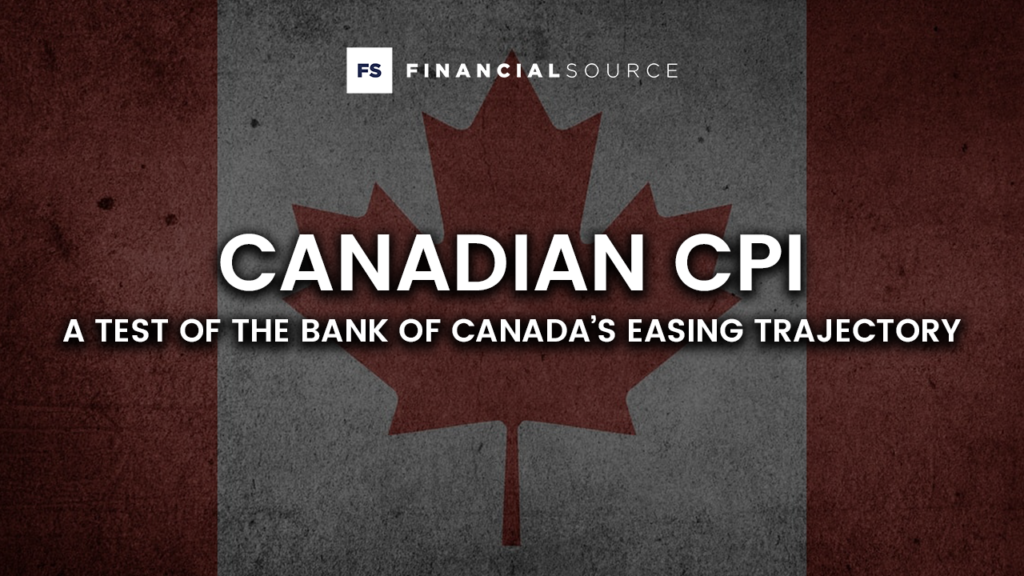Canadian CPI: A Test of the Bank of Canada’s Easing Trajectory

Tuesday’s inflation data for Canada could significantly shape the near-term policy outlook for the Bank of Canada (BoC) and the broader trajectory of the Canadian dollar (CAD). With the BoC cutting rates by 50 basis points in October and shifting its focus firmly toward supporting economic growth, this CPI report takes on outsized importance. The BoC has repeatedly signaled that it sees inflationary pressures easing, allowing for a continued path of monetary easing. However, any surprises in inflation could disrupt this narrative and recalibrate market expectations ahead of December’s policy meeting.
BoC’s Evolving Priorities: From Inflation to Growth
The BoC has declared victory over inflation—or at least over the broad-based pressures that defined its earlier rate-hiking cycle. Inflation forecasts for 2024 and 2025 were revised downward, and the Bank’s preferred measure of core inflation now sits below 2.5%, comfortably within the BoC’s 1-3% target range. BoC Governor Tiff Macklem has emphasized that Canada is “back to low inflation” and that the central bank’s primary focus is now on “sticking the landing”—achieving a balance between easing monetary conditions to support growth while ensuring inflation remains contained.
Growth has emerged as a significant concern for policymakers. Q1 GDP growth underperformed expectations (1.7% vs. 2.2% forecast), and the most recent GDP data underscored this weakness. The August GDP print was flat at 0%, with the prior month revised lower to -0.1%. These data points amplify the BoC’s urgency to deliver further rate cuts, as policymakers now prioritize boosting economic momentum.
For December, markets currently price in a 66% chance of a 25bps cut and a 34% chance of a more aggressive 50bps cut. Weak inflation data this week would tilt these odds heavily toward the latter, reinforcing the bearish outlook for the CAD.
Tuesday’s CPI: Key Scenarios
The headline and core CPI prints will be closely scrutinized, with any significant deviation from expectations likely to move both the CAD and interest rate expectations.
What to Watch For in the Data:
1. Weak Inflation:
- A weak CPI print will confirm the BoC’s narrative of subdued inflation and provide the green light for further easing.
- Markets would likely price in higher odds of a 50bps rate cut in December, leading to CAD selling.
- Data thresholds to watch:
- Headline CPI m/m at 0.1% or lower
- Headline CPI y/y at 1.7% or lower
- Trim CPI Oct at 2.2% or lower
- Median CPI at 2.1% or lower
Market Implications:
- Expect USD/CAD buyers at market as rate cut expectations intensify.
- CADJPY could also see selling pressure.
Bearish CAD Bias Remains, But Oil and Growth Risks Loom
Despite the current easing bias, the CAD remains fundamentally bearish as the BoC navigates a challenging macro environment. With inflation largely under control, the focus on growth leaves the CAD vulnerable to downside risks, particularly if economic data continues to underperform. GDP and labor market data will also remain critical inputs for the BoC as it decides the size and timing of future rate cuts.
However, there are upside risks to this bearish outlook. A surprise rise in oil prices—often correlated with CAD strength—could provide temporary relief for the currency. Additionally, should inflation data prove unexpectedly strong, it would not only delay the pace of rate cuts but also invite CAD buying, at least in the short term.
Growth Challenges Ahead
While the BoC is optimistic about gradual economic strengthening through 2024 (forecasting 1.2% GDP growth), recent data suggest that downside risks persist. The Canadian labor market and broader economic activity will be critical in determining whether the BoC’s easing path remains as aggressive as markets currently expect. A sharper deceleration in growth could trigger a more bearish CAD outlook, with markets pricing in deeper rate cuts.
For now, the CPI report on Tuesday stands as a pivotal data point. A soft inflation print could lock in expectations of further easing, driving the CAD lower, while any upside surprise may force a re-evaluation of the BoC’s easing trajectory. Either way, traders should prepare for heightened volatility in CAD pairs, with Tuesday’s data serving as the next catalyst in shaping the market’s outlook on Canadian monetary policy.